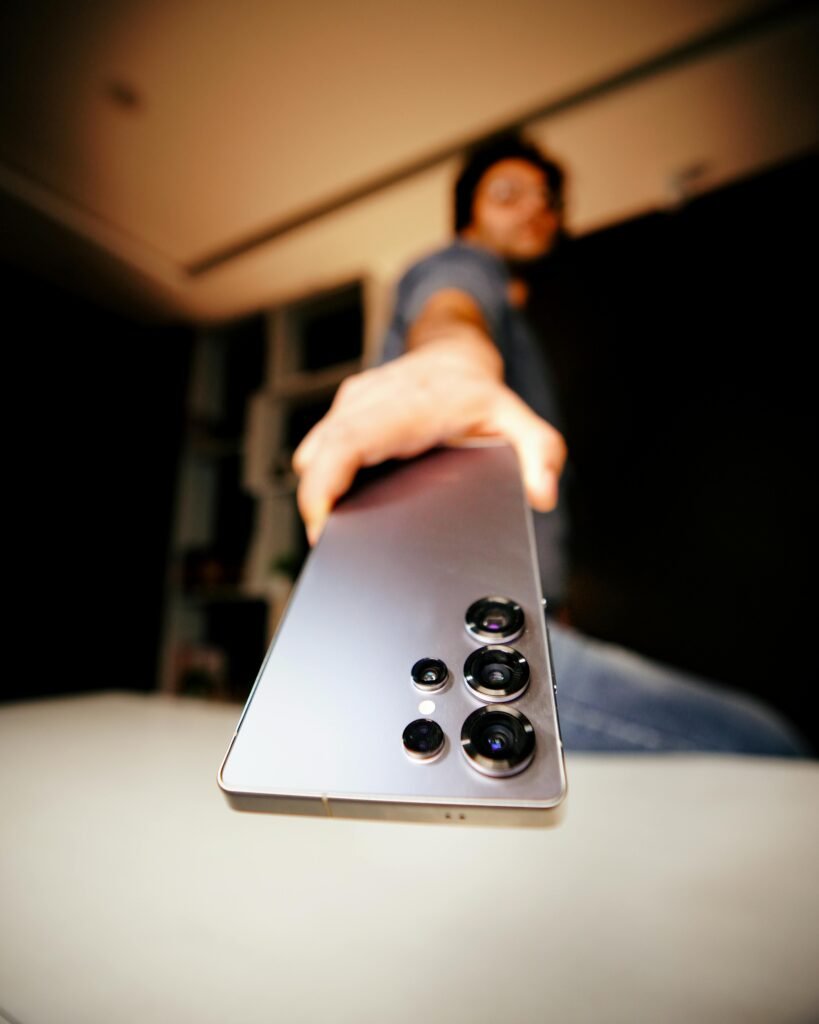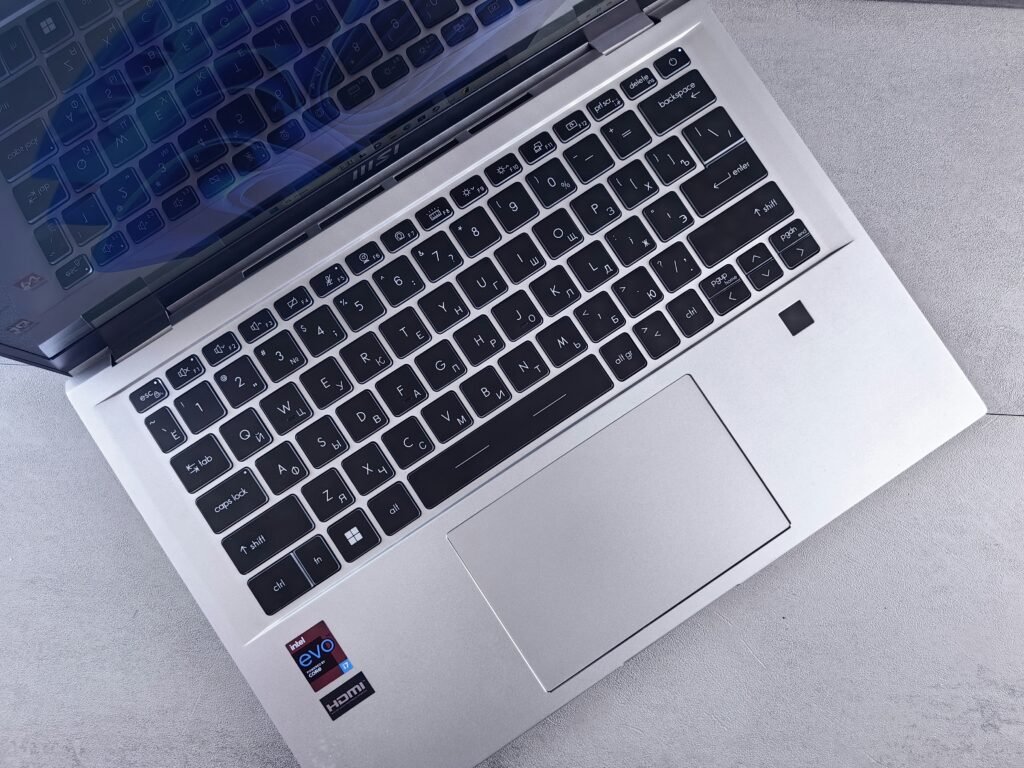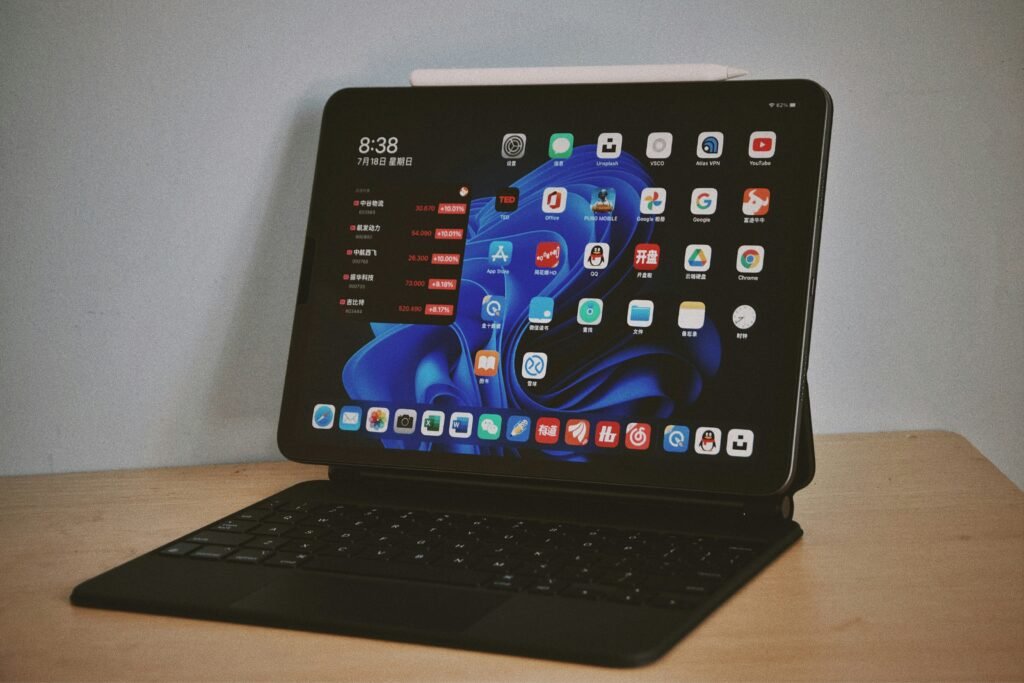
Introduction to the Galaxy Z Fold Concept
The Galaxy Z Fold series has emerged as a groundbreaking innovation within the foldable smartphone market, carving a niche that blends cutting-edge technology with versatile functionality. Launched initially in 2019, the Galaxy Z Fold has undergone extensive evolution, setting benchmarks for mobile device design and usability. By 2026, the anticipated specifications and features of the Galaxy Z Fold promise to redefine user interaction with smartphones, reinforcing the brand’s commitment to innovation.
As a pioneer in the foldable arena, the Galaxy Z Fold stands out with its unique form factor, allowing users to seamlessly transition between a compact phone and a spacious tablet-like experience. This versatility has reshaped consumer expectations, pushing competitors to innovate further in their own foldable device offerings. The Galaxy Z Fold features a remarkable crease-less design, enhanced durability, and integration of sophisticated technology, such as flexible OLED displays and multi-tasking capabilities that cater to the modern, on-the-go lifestyle.
The advancements expected in future iterations of the Galaxy Z Fold focus on improving not just hardware, but also software, to create an even more user-friendly experience. With updates in performance specifications, such as upgraded processors, larger battery capacities, and enhanced camera systems, the device aims to merge high performance with the convenience of foldable technology. Moreover, improvements in software features will likely introduce smarter multitasking options and seamless app interactions, leveraging the dual-display nature of the device to enhance productivity.
The progressive journey of the Galaxy Z Fold since its inception symbolizes a broader trend in mobile technology, where flexibility and functionality converge. Given the rapid pace of technological advancements, the Galaxy Z Fold in 2026 is anticipated to build upon its foundational strengths while embracing innovative features that further distinguish it from traditional smartphones and other foldable competitors.
Historical Context of Foldable Technology
The journey of foldable technology began in the early 21st century when manufacturers started exploring new ways to innovate traditional smartphone designs. The first major milestone was in 2013 when Samsung unveiled the Galaxy Round, featuring a curved display. Although not a foldable device in the truest sense, it laid the groundwork for more fluid forms of mobile technology. A few years later, in 2019, the smartphone industry saw a significant turning point with the launch of the Samsung Galaxy Fold, which marked the first commercial foldable device, showcasing a unique blend of a smartphone and tablet experience.
Despite the initial excitement, the Galaxy Fold’s debut was marred by issues such as screen durability and hinge reliability, underscoring the challenges that manufacturers faced in the nascent foldable market. These setbacks prompted a substantial rethink regarding materials and design practices. Subsequent models, like the Motorola Razr and Huawei Mate X, attempted to address various concerns but revealed the delicate balance between innovation and practicality. In 2020, Samsung rectified many of the issues with an improved iteration of the Galaxy Fold, bringing enhanced durability and usability to consumers.
As foldable technology progressed, additional features were introduced, including multitasking capabilities, improved camera systems, and innovative use of software to capitalize on the unique form factor. By 2026, the specifications of the Galaxy Z Fold reflect these evolutionary milestones, integrating advanced technologies such as ultra-thin glass displays, high-refresh-rate screens, and versatile camera functions. The lessons learned from early iterations have significantly shaped the current landscape, with manufacturers now focusing on durability and functionality while pushing the boundaries of foldable design.
Key Specifications Overview
The Galaxy Z Fold in 2026 is anticipated to feature significant advancements in its specifications, which are fundamental in enhancing user experience. One of the key upgrades is in the display technology, transitioning towards a larger and more vibrant screen that incorporates AMOLED technology. This shift is expected to deliver richer colors and deeper blacks, maximizing visual engagement for users. The display is likely to measure around 7.6 inches when unfolded, complemented by a secondary touchscreen of approximately 6.2 inches, ensuring an expanded user interface for multitasking and immersive interactions.
Processing power is another area of focus for the Galaxy Z Fold in 2026. The device is expected to be equipped with the latest generation of processors, likely featuring an octa-core chipset that enhances performance and efficiency. This improvement will enable users to run multiple applications simultaneously without experiencing lag, thereby addressing a common concern for foldable devices. Alongside a robust processor, the device is projected to incorporate an increased RAM capacity of 12 GB or more. This upgrade will further bolster the user experience, particularly for those engaging in demanding tasks such as gaming or intensive application use.
Battery life enhancements are also a significant highlight, with the Galaxy Z Fold in 2026 expected to feature a battery capacity of around 5000 mAh. This advancement will provide users with extended usage time, accommodating the power demands of the upgraded display and processor. Additionally, connectivity features will be state-of-the-art, offering support for 5G networks and the latest Wi-Fi standards, ensuring fast and reliable internet connectivity. These key specifications collectively position the Galaxy Z Fold in 2026 as a formidable contender in the foldable smartphone market, emphasizing performance and user satisfaction.
Design and Build Quality Enhancements
The Galaxy Z Fold has continually evolved, with the 2026 model showcasing significant enhancements in design and build quality. One of the most notable improvements is the refinement of its S-curve design, which has been optimized to enhance ergonomics while maintaining a sleek aesthetic. This design philosophy not only contributes to the device’s visual appeal but also ensures that it is comfortable to hold and operate. The dimensions of the Galaxy Z Fold have been carefully calibrated to provide a balance between a compact form factor and usability, making it a versatile option for both casual and professional use.
In terms of materials, Samsung has integrated Gorilla Glass Victus into the Z Fold’s construction. This innovative glass offers superior scratch resistance and durability, ensuring that the device can withstand the rigors of daily use. The application of such advanced materials not only enhances the overall sturdiness of the phone but also contributes to its lightweight profile. Users can expect a device that feels robust in hand yet remains manageable for everyday tasks.
Another critical aspect of the Galaxy Z Fold’s design is its hinge technology. Samsung has pioneered advancements in hinge mechanisms, resulting in a smoother opening and closing experience. This innovation not only prolongs the lifespan of the device but also minimizes stress on the internal components, addressing common concerns related to foldable devices. The hinge mechanism has been tested rigorously to ensure consistent performance under various conditions, further emphasizing the brand’s dedication to quality and craftsmanship in its foldable technology.
Camera Innovations and Performance
The Galaxy Z Fold in 2026 showcases significant advancements in camera specifications and performance, positioning it as a leader in mobile photography. The device features a versatile triple-lens rear camera system, comprising a high-resolution 108 MP primary sensor, a 12 MP ultra-wide lens, and a 10 MP telephoto lens. These enhancements allow users to capture high-quality images across various scenarios, from vast landscapes to close-up portraits.
Moreover, the front camera setup consists of a dual-lens system featuring a 20 MP primary sensor and an additional 12 MP wide-angle lens. This configuration not only caters to the demand for high-quality selfies but also facilitates engaging video calls. The integration of advanced artificial intelligence (AI) processing significantly improves image quality, providing features such as scene recognition and smart HDR, ensuring optimum results in varying lighting conditions.
The photography software has also received substantial updates, with more emphasis on user experience and creativity. New modes such as Pro Video Mode and Night Mode have been engineered to enhance the versatility of the camera system. Users can now fine-tune their settings for precise control when shooting in challenging environments or capturing dynamic subjects. Additionally, the long-awaited integration of improved stabilization technology ensures that every shoot results in smooth and professional-looking videos, fulfilling the needs of content creators.
With the introduction of exciting software features like multi-frame processing, users are empowered to capture multiple images in rapid succession, allowing for the selection of the best shot. Overall, the camera innovations included in the Galaxy Z Fold 2026 not only elevate the user’s photography experience but also solidify its reputation as a formidable competitor in the smartphone market.
User Interface and Software Experience
The evolution of the Galaxy Z Fold series has been significantly influenced by advancements in user interface and software experience. The incorporation of the One UI interface in the latest iteration optimizes the device’s capabilities to maximize the advantages offered by the foldable design. This version of One UI has been specifically tailored to enhance usability and accessibility, providing users with a more intuitive experience that leverages the unique characteristics of the foldable display.
One of the standout features is the improved multitasking functionality that the software now supports. Users can seamlessly operate multiple applications at once, utilizing the large, flexible screen effectively. The split-screen mode allows for two apps to be displayed side by side, enabling users to interact with both simultaneously without losing context. Furthermore, the capability to resize app windows adds versatility, allowing for an even more customized multitasking environment. For a device that encourages productivity and creativity, these enhancements contribute significantly to the overall experience.
App compatibility has also seen considerable improvement over time. Developers have adapted their applications to better suit the foldable format, delivering experiences that take advantage of the expansive screen. Essential apps have been optimized for the Z Fold, ensuring that users can access functions efficiently without encountering the limitations typical of traditional smartphones. Moreover, the introduction of Multi Window enables more than two apps to be active, further enhancing the functionality of the device in professional and creative settings.
Overall, the user interface and software experience of the Galaxy Z Fold in 2026 reflect a thoughtful integration of advanced features that cater specifically to the needs of foldable device users. As software continues to evolve, it is likely that the experience will only become more refined, further solidifying the Z Fold’s position as a unique and innovative device in the tech landscape.
Battery Technology and Charging Solutions
The advancements in battery technology significantly shape the performance of the Galaxy Z Fold in 2026. A key focus in this iteration is on enhancing battery capacity while promoting energy efficiency, which ensures users enjoy extended usage without frequent interruptions. The Galaxy Z Fold is anticipated to feature an improved battery capacity that surpasses its predecessors, potentially reaching upwards of 5,000 mAh. This boost caters to the demands of modern usage, allowing for longer periods of operation even under heavy multitasking conditions.
Additionally, fast charging capabilities are set to evolve, with the Galaxy Z Fold in 2026 likely supporting charging speeds of 65W or more. Such enhancements not only reduce the time taken to recharge the device but also improve the overall convenience for users who rely on quick power-ups throughout their day. Users will benefit from charging technology that enables the device to reach up to 50% capacity in 30 minutes, thereby addressing concerns around battery life effectively.
Wireless charging support is another refining feature expected to be prevalent in the 2026 Galaxy Z Fold model. With faster wireless charging solutions, users can expect power delivery rates that closely match those of wired counterparts. This innovative charging solution highlights the importance of versatility in modern devices, allowing users to recharge effortlessly while maintaining the sleek aesthetics of the foldable smartphone. Moreover, reverse wireless charging remains a crucial inclusion, enabling the Galaxy Z Fold to charge other devices, such as earbuds and smartwatches, directly from its own battery.
These advancements not only exemplify the focus on functionality but also demonstrate a commitment to sustainability. The integration of energy efficiency measures ensures that the Galaxy Z Fold can perform effectively while minimizing power consumption. With advancements in battery technology and charging solutions, the user experience will be significantly enhanced, solidifying the Galaxy Z Fold’s standing as a leading foldable device in the mobile market.
Pricing and Market Positioning
The pricing of the Galaxy Z Fold in 2026 will likely reflect a combination of advanced technology, superior materials, and market dynamics that characterizes the foldable device sector. With the evolution of smartphones, manufacturers have consistently adjusted pricing strategies to accommodate a widening array of features and specifications. Historically, foldable devices have commanded premium prices due to their innovative design and the complexity of their manufacturing processes. As Samsung’s flagship foldable device, the Galaxy Z Fold is expected to uphold this tradition, but varying factors may influence its final retail pricing.
One significant factor influencing the pricing model will be the cost of materials. The Galaxy Z Fold of 2026 may utilize next-generation materials that enhance durability and flexibility while remaining lightweight. Innovations such as improved flexible displays and stronger hinges could come at a higher production cost, subsequently affecting the retail price. Additionally, advancements in battery technology and processor capabilities could also contribute to the overall expense, as customers increasingly seek longer-lasting devices with robust performance.
Market demand is another critical aspect that will guide pricing. As foldable smartphones become more prevalent, competition among manufacturers will intensify. Samsung will need to consider the pricing strategies of rival brands that have entered the foldable market, as several tech companies are anticipated to release their models within the next few years. To maintain a competitive edge, it may be imperative for Samsung to strategically price the Galaxy Z Fold, balancing its advanced features against emerging alternatives.
Ultimately, while the anticipated pricing for the Galaxy Z Fold in 2026 will reflect high-end qualities and cutting-edge technology, strategic considerations regarding competition and market demand will play a crucial role in shaping its market position.
Conclusion: Future of Foldable Smartphones
The evolution of foldable smartphones, exemplified by the Galaxy Z Fold in 2026, marks a significant turning point in the mobile device landscape. As manufacturers continually improve the technology behind these devices, user expectations are consistently heightened. The Galaxy Z Fold series has shown that innovation in design can be both functional and aesthetically pleasing, paving the way for future advancements in this category.
As we look ahead, it is anticipated that the Galaxy Z Fold will integrate even more sophisticated features, driven by user feedback and market demands. Improvements in durability, battery life, and software capabilities are likely to be at the forefront of these advancements. Manufacturers are expected to focus on enhancing the user experience, ensuring that foldable devices not only meet the needs of tech enthusiasts but also appeal to the broader consumer base.
In addition to performance enhancements, it will be essential for upcoming foldable smartphones to maintain affordability. As the technology matures, prices may become more competitive, potentially increasing accessibility for a wider audience. This democratization of foldable smartphones could lead to an increase in adoption rates, creating a robust market for innovative mobile devices.
Moreover, the potential for personalized experiences through AI integration and improved multitasking capabilities is significant. With each iteration, the software of the Galaxy Z Fold will likely evolve, offering unique features tailored to individual user preferences. The future of foldable smartphones appears bright, with continued excitement surrounding what’s to come in innovation and technology.





1 thought on “The Galaxy Z Fold in 2026: Specifications and Features”